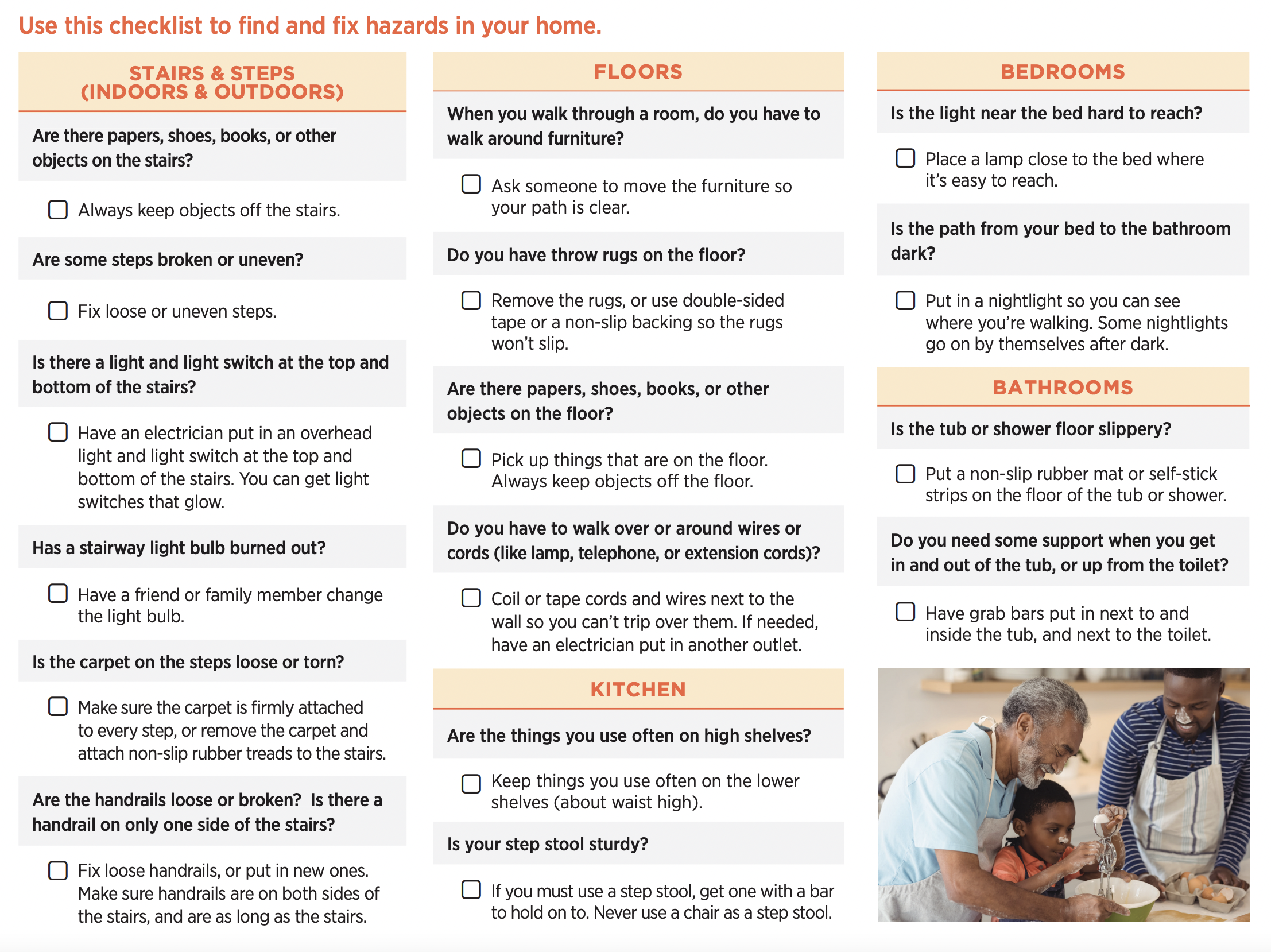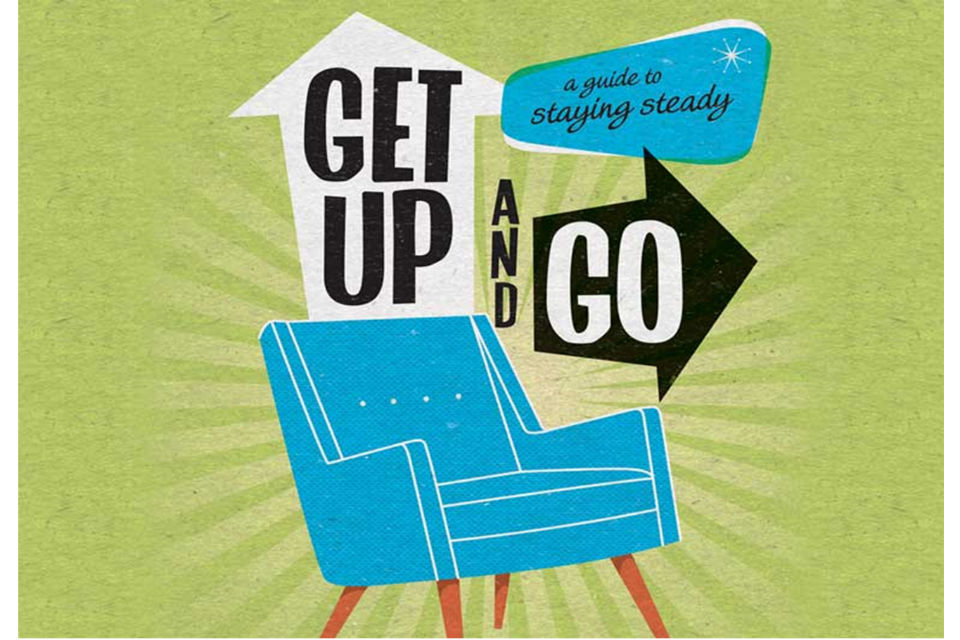What Does Dementia Fall Risk Do?
What Does Dementia Fall Risk Do?
Blog Article
The Greatest Guide To Dementia Fall Risk
Table of ContentsDementia Fall Risk for DummiesLittle Known Facts About Dementia Fall Risk.3 Simple Techniques For Dementia Fall RiskDementia Fall Risk Fundamentals Explained
A loss risk evaluation checks to see just how likely it is that you will certainly fall. It is primarily provided for older grownups. The evaluation usually consists of: This consists of a collection of questions concerning your general health and if you have actually had previous drops or issues with equilibrium, standing, and/or walking. These tools examine your strength, balance, and gait (the means you stroll).STEADI consists of screening, analyzing, and treatment. Interventions are suggestions that may reduce your danger of falling. STEADI includes three steps: you for your threat of succumbing to your risk aspects that can be improved to attempt to avoid drops (for instance, equilibrium issues, impaired vision) to decrease your threat of dropping by using effective strategies (as an example, offering education and resources), you may be asked several inquiries consisting of: Have you dropped in the previous year? Do you feel unsteady when standing or walking? Are you fretted about dropping?, your company will certainly evaluate your strength, balance, and stride, using the complying with autumn evaluation tools: This test checks your gait.
You'll sit down again. Your company will examine how lengthy it takes you to do this. If it takes you 12 secs or more, it might indicate you go to greater danger for an autumn. This examination checks stamina and balance. You'll being in a chair with your arms crossed over your breast.
Relocate one foot halfway onward, so the instep is touching the big toe of your other foot. Move one foot completely in front of the other, so the toes are touching the heel of your various other foot.
Things about Dementia Fall Risk
Most falls take place as a result of numerous adding factors; as a result, handling the threat of falling starts with recognizing the elements that add to fall risk - Dementia Fall Risk. Some of the most pertinent risk factors consist of: Background of prior fallsChronic clinical conditionsAcute illnessImpaired stride and equilibrium, lower extremity weaknessCognitive impairmentChanges in visionCertain high-risk medicines and polypharmacyEnvironmental elements can additionally boost the threat for falls, including: Insufficient lightingUneven or harmed flooringWet or slippery floorsMissing or damaged handrails and order barsDamaged or improperly equipped tools, such as beds, wheelchairs, or walkersImproper use assistive devicesInadequate guidance of individuals living in the NF, including those that show aggressive behaviorsA successful autumn threat administration program calls for a comprehensive clinical assessment, with input from all participants of the interdisciplinary team

The treatment strategy must also include treatments that are system-based, such as those that advertise a risk-free environment (suitable illumination, hand rails, order bars, and so on). The efficiency of the treatments should be evaluated periodically, and the treatment plan modified as essential to mirror adjustments in the fall danger assessment. Applying a fall threat monitoring system using evidence-based finest technique can reduce the frequency of falls in the NF, while restricting the potential for fall-related injuries.
The smart Trick of Dementia Fall Risk That Nobody is Discussing
The AGS/BGS standard recommends screening all adults matured 65 years and older for loss danger each year. This screening is composed of asking clients whether they have actually dropped 2 or more times in the past year or looked for clinical interest for an autumn, or, if they have not dropped, whether they feel unsteady when strolling.
People that have dropped when without injury needs to have their equilibrium and gait evaluated; those with gait or equilibrium irregularities ought to obtain added assessment. A background of 1 loss without injury and without gait or equilibrium problems does not warrant more assessment beyond continued annual fall threat screening. Dementia Fall Risk. A loss threat analysis is called for as component of the Welcome to Medicare assessment

An Unbiased View of Dementia Fall Risk
Recording a falls history is one of the high quality indicators for fall avoidance and administration. A crucial part of threat evaluation is a medicine testimonial. Numerous courses of drugs boost fall threat read this article (Table 2). Psychoactive drugs in particular are independent predictors of falls. These drugs tend to be sedating, modify the sensorium, and hinder equilibrium and gait.
Postural hypotension can commonly be alleviated by minimizing the dose of view website blood pressurelowering medications and/or quiting drugs that have orthostatic hypotension as an adverse effects. Usage of above-the-knee support pipe and resting with the head of the bed raised might likewise reduce postural decreases in blood stress. The advisable components of a fall-focused physical exam are shown in Box 1.

A TUG time higher than or equivalent to 12 seconds recommends high autumn risk. Being not able to stand up from a chair of knee height without using one's arms indicates boosted check this site out fall danger.
Report this page